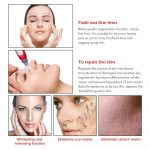Inflammation is a natural response to injury or illness, but when it becomes chronic or severe, it can lead to a host of health problems. Many people are turning to infrared light therapy as an alternative to traditional treatments for reducing inflammation. In this article, we will look at the evidence behind the claims that infrared light therapy can reduce inflammation and discuss whether it is an effective and safe treatment option.

Contents
Infrared Therapy as a Natural Treatment for Inflammation
Inflammation is the body’s natural response to injury and infection, and can be caused by everything from physical trauma to autoimmune diseases. Infrared therapy is a natural treatment for inflammation that works by safely and effectively delivering heat to the affected area. This heat helps to reduce swelling, pain, and discomfort, as well as to promote healing and reduce the risk of further complications. This type of therapy has been used for centuries in traditional medicine and is now gaining popularity in modern medical treatments.
Infrared therapy has been found to be effective in treating a variety of conditions, including inflammation. Studies have shown that the application of infrared radiation can reduce the inflammation associated with arthritis, tendonitis, and other musculoskeletal conditions. It is also believed to help reduce inflammation in the digestive tract, improve circulation, and heal wounds. Additionally, there is evidence to suggest that infrared therapy may help to reduce chronic pain and improve overall health.
The therapeutic effects of infrared radiation are due to its ability to penetrate deeply into the skin and underlying tissue. This radiation is able to target specific areas of the body, providing a focused and localized treatment for inflammation. It is also believed that the heat generated by the infrared radiation helps to promote healing by stimulating the body’s natural healing response.
How Infrared Therapy Works
Infrared therapy works by delivering infrared radiation to the affected area, which helps to reduce swelling, pain, and discomfort. The radiation penetrates deeply into the skin and underlying tissue, targeting specific areas of the body and providing a localized treatment. This type of therapy is typically used in conjunction with other treatments, such as physical therapy or medications, to provide a more comprehensive approach to treating inflammation.
Infrared radiation is delivered to the body through various means, such as heat lamps, infrared saunas, and special infrared wraps. These treatments are typically administered over a period of time and at a specific frequency, depending on the severity of the inflammation. The duration and frequency of the treatments will vary depending on the individual’s condition and response.
The Benefits of Infrared Therapy
Infrared therapy is a safe and effective treatment option for those suffering from inflammation. It has been found to reduce swelling, pain, and discomfort associated with various conditions. Additionally, it is believed to help promote healing and reduce the risk of further complications.
The use of infrared radiation has also been shown to improve overall health and well-being. Studies have shown that it may be beneficial in improving circulation, reducing fatigue, and boosting immunity. Additionally, it has been found to reduce stress and anxiety, as well as to improve mood and sleep quality.
Risks and Side Effects of Infrared Therapy
Infrared therapy is generally safe and well-tolerated, but there are some potential risks and side effects associated with its use. These include skin redness and irritation, as well as an increased risk of sunburn. It is important to discuss any potential risks and side effects with a healthcare provider before beginning treatment.
Conclusion
Infrared therapy is a natural treatment for inflammation that works by delivering heat to the affected area to reduce swelling, pain, and discomfort. Studies have shown that it can be beneficial in treating a variety of conditions, as well as promoting overall health and well-being. It is generally safe and well-tolerated, but there are some potential risks and side effects associated with its use. It is important to discuss any potential risks and side effects with a healthcare provider before beginning treatment.
Few Frequently Asked Questions
What is Infrared?
Infrared (IR) is a form of light energy that has a longer wavelength than visible light. It is part of the electromagnetic spectrum and is invisible to the human eye. It is used in a variety of applications including medical treatments, heating and cooling, infrared photography and communication.
What is Inflammation?
Inflammation is a natural process of the body’s immune system to protect itself from harmful agents such as bacteria, viruses, and toxins. When inflammation occurs, the body releases chemicals that cause the affected area to become red, swollen, and painful.
Does Infrared Reduce Inflammation?
Yes, infrared can reduce inflammation. Infrared light has been studied for its ability to reduce inflammation and promote healing. It does this by increasing circulation and oxygenation of the affected area, which helps to reduce swelling and pain.
How is Infrared Used to Reduce Inflammation?
Infrared can be used to reduce inflammation through several different methods. Infrared saunas, infrared lamps, infrared heat therapy and infrared lasers are all used to reduce inflammation. These methods use infrared light to increase circulation and oxygenation to the affected area, which helps to reduce swelling and pain.
What are the Benefits of Infrared for Inflammation?
The benefits of infrared for inflammation are numerous. Infrared has been found to reduce inflammation, promote healing, reduce pain, and improve mobility. It can also increase circulation, reduce stress, and improve overall wellness.
Are There Any Risks Associated with Infrared for Inflammation?
Yes, there are some risks associated with infrared for inflammation. It is important to consult with a medical professional before beginning any infrared treatment. Additionally, people with certain health conditions such as diabetes, heart disease, and pregnant women should use infrared with caution.
Near Infrared Light Reduces Inflammation via TLR4 In Vitro
In conclusion, it is clear that infrared therapy can reduce inflammation by providing a natural and painless method of relief. The heat energy from infrared light can penetrate up to four inches deep into the body, providing a safe and drug-free alternative to traditional pain relief. This therapy has been used for centuries, and its effectiveness has been proven in numerous studies. With infrared light therapy, inflammation can be reduced quickly and without any side effects.








